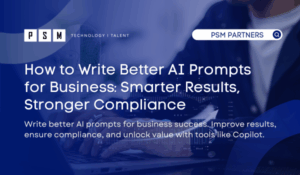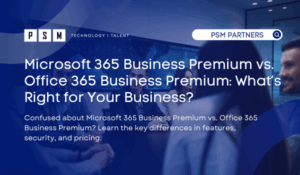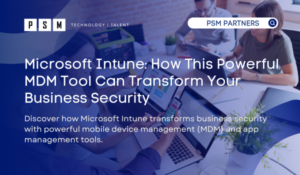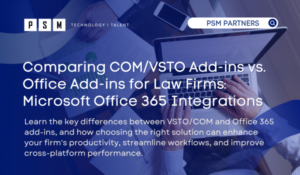Table of Contents
ToggleKey Takeaways
-
What is Conditional Access?
Conditional Access (CA) is a security approach that evaluates the context of each sign-in, such as who the user is, where they are connecting from, and what device they are using, before granting or blocking access.
-
How is Conditional Access different from security defaults?
Unlike security defaults, Conditional Access provides advanced, customizable policies that integrate with Microsoft Entra ID security. These features require either an Entra ID P1 or Entra ID P2 license.
-
What kind of control does Conditional Access provide?
It offers granular access control, letting IT teams create policies based on user roles, device compliance, location, or data sensitivity.
-
Why is Conditional Access important in today’s workplace?
It supports a cloud-centric model, ensuring secure access for distributed and remote work environments.
-
How does Conditional Access fit into a Zero Trust strategy?
CA policies are core to Zero Trust, as they continuously verify trust at every access request, rather than relying only on usernames and passwords.
-
What Conditional Access policies should organizations implement first?
Practical starting points include: Enforcing multi-factor authentication (MFA) Blocking legacy authentication Requiring compliant or trusted devices Restricting access by location or risk level
Understanding the Challenge
The way we work has changed dramatically in the last five years. Between hybrid work models, the explosion of cloud-based applications, and employees connecting from all over the world, organizations can no longer rely on a traditional security model where everything inside the corporate network is trusted. In a cloud-centric environment, organizations must focus on managing access to resources by evaluating contextual factors and risk levels to optimize both security and user experience. The modern threat landscape demands that access control decisions be based on identity, device health, and contextual risk, no matter where the user is located. This is where Conditional Access steps in. It adds a layer of intelligence to authentication by using identity driven signals—including user and device identity—to make access control decisions. Conditional Access evaluates the user’s identity and device identity, along with contextual risk, to determine access to resources. This ensures that the right people, using trusted devices, in the right circumstances, can access sensitive resources.
How Conditional Access Works
Conditional Access is implemented through access control policies that define how users access specific resources within your IT environment. Think of Conditional Access Policies like a set of “if-then” rules, administrators use to control users access to corporate resources. These policies can be tailored to enforce access controls for specific resources or a target resource, depending on organizational needs.
Conditional access policies work by allowing administrators to set rules that control users access based on conditions such as user behavior, device compliance, location, or application sensitivity. For example, you might allow access without interruption when an employee logs in from a corporate laptop inside your Chicago office, but require multifactor authentication (MFA) when that same employee tries to log in from a personal device at an airport. First factor authentication, such as a password, must be completed before Conditional Access can require multifactor authentication for additional security.
Access control decisions are made by evaluating identity-driven signals and contextual factors, such as user behavior and device state, to determine whether to grant or deny access. In more sensitive cases, such as an unusual sign-in from an unfamiliar country, policies can deny access or enforce protections like requiring multifactor authentication for high-risk scenarios, a capability available exclusively with Entra ID P2.
This dynamic decision-making process helps organizations monitor and enforce policies, ensuring ongoing security and flexibility while users access specific resources.
The Zero Trust Framework and Conditional Access
Conditional access policies are at the heart of the Zero Trust framework, which operates on the principle that no user or device should be trusted by default—regardless of their location or previous access history. Instead, every access request is evaluated in real time, requiring continuous verification of user identity and device compliance before granting access to sensitive resources. An important note here is that some of these verification steps happen entirely behind the scenes and are invisible to the end user. For example, device compliance checks occur automatically in the background; there’s nothing the user needs to do to “prove” their device is compliant when a Conditional Access policy evaluates it. This means Zero Trust principles don’t necessarily slow down or complicate the login process, even though security is significantly strengthened.
This approach ensures that only authorized users, using compliant devices, are able can access company resources and sensitive data. Conditional access policies can be tailored to specific users, groups, or devices, allowing IT teams to grant access based on a combination of user identities, device health, and contextual risk factors. This minimizes the risk of unauthorized access and lateral movement within the network, helping organizations protect their most sensitive resources. By integrating conditional access with Zero Trust principles, organizations can maintain robust security controls while supporting productivity and flexibility for their workforce.

Must-Implement Conditional Access Policies:
Multi-factor authentication is one of the simplest and most effective ways to stop unauthorized access. Conditional Access allows you to apply MFA universally or only in higher-risk scenarios, such as when users log in from an unrecognized device or location.
Many older email authentication protocols, like IMAP, POP, and SMTP, cannot enforce modern security controls such as MFA. Cybercriminals know this and often target these protocols as a backdoor into accounts. By using CA to block legacy authentication, you close off an entire class of easy attacks.
Allowing only devices that meet your organization’s compliance standards, such as having up-to-date patches, endpoint protection, and encryption, greatly reduces the risk of compromised endpoints accessing sensitive systems. Conditional Access can also be used to enforce compliance requirements for personal devices in BYOD scenarios, ensuring that employees’ own devices meet security standards before accessing corporate resources. CA can integrate with device management tools like Microsoft Intune to enforce this automatically.
Not all sign-ins are created equal. If a login attempt is coming from an untrusted country or an IP range you have never seen before, it is worth taking a closer look, and forcing the user to satisfy an MFA request to ensure the logon attempt’s legitimacy. CA policies can also block those attempts outright, a concept known as geofencing, enabling organizations to only allow authorized access to resources from specific countries.
Access can also be restricted to users connecting from a trusted network, such as a corporate office or VPN, reducing the risk of unauthorized access from unknown locations. Additionally, policies can analyze user behavior to detect suspicious activity and trigger additional verification steps when anomalies are detected. These controls help protect sensitive information from unauthorized access, especially when users attempt to sign in from risky or unverified locations.
Disaster recovery and business continuity are vital components of a robust managed services strategy. Managed service providers assist businesses in developing and implementing comprehensive disaster recovery plans, ensuring that critical systems and data are safeguarded against outages or disasters. This includes setting up robust backup and failover systems, as well as providing proactive monitoring and support to minimize downtime and ensure business continuity. By partnering with a managed service provider, businesses can ensure their operations are resilient and capable of quickly recovering from unexpected disruptions, thereby maintaining reliable performance and operational efficiency.
Leveraging Microsoft’s Policy Templates
Microsoft offers a variety of built-in Conditional Access templates designed around common scenarios such as protecting administrators, securing remote work, and blocking legacy authentication. Each template provides a starting point for creating a conditional access policy tailored to your needs. These templates provide a strong starting point, especially for organizations without a dedicated security team, because they align with industry best practices right out of the box. You can implement them quickly and then fine-tune them based on your own business processes, risk tolerance, and user base. Conditional access features in Entra ID allow for advanced customization and integration with other Microsoft security products, making it possible to replace security defaults with more flexible, granular controls. This combination of ready-made and customizable policies makes CA a powerful tool for both small IT teams and larger enterprises.
Configuration and Setup Essentials
Setting up effective conditional access policies requires IT teams to carefully define the conditions under which users can access company resources. The process begins with verifying user identity through secure authentication methods, such as passwords, biometrics, and multi-factor authentication. Device health is also assessed to ensure that only devices meeting security standards—such as up-to-date operating systems, security patches, and endpoint protection—are granted access.
Conditional access policies can be configured to restrict access based on user location, allowing only connections from trusted networks or specific geographic regions. Integration with Microsoft Entra ID streamlines the enforcement of these access policies across cloud apps and on-premises resources, ensuring consistent security controls. Comprehensive logging and reporting features in Microsoft Entra ID allow IT teams to monitor access attempts, track policy enforcement, and support compliance audits. By regularly reviewing and updating these policies, organizations can adapt to new threats and maintain a strong security posture.
Testing and Troubleshooting Your Conditional Access Policies
Ensuring that conditional access policies are functioning as intended is critical for maintaining a strong security posture. CA Policies can be placed into “Report Only” mode, allowing IT teams can use tools like the “What If” tool in Microsoft Entra ID to simulate authentication requests and predict how access policies will be applied in different scenarios. This helps identify potential issues before they impact users.
Sign-in logs provide detailed insights into each access attempt, showing which conditional access policies were evaluated and the resulting access decisions. This information is invaluable for troubleshooting denied access or unexpected policy behavior. Regularly reviewing these logs and conducting risk analysis allows organizations to identify gaps in their security measures and optimize their conditional access configurations. By continuously testing, monitoring, and refining access policies, IT teams can ensure that only trusted users and devices gain access to sensitive resources, keeping the organization’s assets fully protected.
A Practical Example for a Mid-Sized Organization :
Let’s say your company uses Microsoft 365, has on-premises Active Directory synchronized with Entra ID, and supports a hybrid workforce. You might begin by enabling some template CA Policies from Microsoft’s “Secure Foundation” or “Zero Trust” categories, which are designed to provide baseline security protection to your organization. Next, you would layer on custom rules: require MFA for all remote sign-ins, allow seamless logins from trusted office networks, and block access entirely from high-risk locations. For your IT administrators, you would add additional safeguards, such as limiting portal access to compliant devices and requiring MFA every time they log in. Policies can be designed to protect sensitive information while allowing users to maintain productivity, ensuring that security controls do not hinder operational efficiency. To avoid accidental lockouts, you would maintain a “break-glass” emergency admin account excluded from most policies, stored securely, and only used when absolutely necessary. Over time, you would monitor sign-in logs, use CA’s “report-only” mode to test changes, and refine your policies to maintain a balance between user experience and security as users access various resources.
Why This Matters for You
Conditional Access ensures security is not an all-or-nothing proposition. By applying the right controls in the right scenarios, you maintain strong defenses without slowing down everyday business. It supports a modern, identity-driven approach to security that scales as your workforce grows and becomes more distributed. It also helps organizations stay compliant with regulations by enforcing consistent access policies and maintaining detailed audit logs of sign-ins and access decisions.
Secure Your Access Strategy with PSM Partners
If your organization has not yet implemented Conditional Access, now is the time to start. The threats targeting identities are only growing, and this approach gives you the ability to protect sensitive systems without locking down productivity. PSM Partners can help you design, deploy, and manage Conditional Access policies tailored to your unique business needs, ensuring a secure and seamless experience for your users.
Related Insights
How to Write Better AI Prompts for Business: Smarter Results, Stronger Compliance
Key Takeaways Why do better prompts matter in business? Clear,...
Read MoreM365 Business Premium vs. O365 Business Premium: What’s Right for Your Business?
Key Takeaways What’s Included in Microsoft 365 Business Premium? Microsoft...
Read MoreMicrosoft Intune: How This Powerful MDM Tool Can Transform Your Business Security
The COVID-19 pandemic has reshaped the landscape of numerous industries,...
Read MoreComparing COM/VSTO Add-ins vs. Office Add-ins for Law Firms: Microsoft Office 365 Integrations
The utilization of Microsoft products spans across various industries, with...
Read MoreAbout the Author

Marisa Maiella
I'm a dynamic Marketing Coordinator with a passion for crafting compelling marketing campaigns and engaging content. Known for my creativity and strategic approach, I am committed to fostering brand growth and enhancing engagement through innovative marketing strategies.





